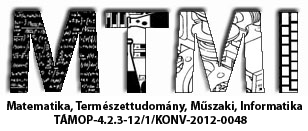Factor XIII and NETosis
Előadás adatai
Introduction: Neutrophil granulocytes, play a crucial role in the innate immune system,recently have been found to have an additional property. In response to stimulation by microorganisms such as bacteria or fungi,neutrophils undergo a specific form of cell death which results in the formation of extracellular traps. The Neutrophil Extracellular Trap (NET) is a highly organized 3D meshwork of DNA backbone embedded with cellular proteins. Ejected NET from the neutrophils hinders the progression of microorganisms in the blood circulation by forming a physical barrier in addition to the direct bactericidal function of the NET proteins. Examination of the NET structure suggests the involvement of transglutaminases(TG) ,which catalyze the formation of covalent bonds between a carboxylamide group of the glutamine residues and the amino group of the lysine residues of the polypeptide chains.
Methods: Human derived neutrophils were treated with PMA for 4 hours to induce NET formation. Released DNA was dyed with SYTO 83 Orange and examined by a confocal laser scanning microscope. In situ TG activity was detected using 5-(Biotinamido) pentylamine-incorporation assay by Western blot. Applying these methods in a time- and dose dependent manner of amine substrate incorporation,the effect of the competitive inhibitor monodansylcadaverine and the involvement of calcium ions in the process were assessed. Expression of Factor XIIIA in neutrophils as a potential enzyme responsible for the observed TG activity was examined by real-time qPCR, immunostaining and Western Blot. Results: We observed an augmentation in TG activity during NET formation in neutrophils. Activation upon neutrophil stimulation was found to be calcium dependent. TG activity was inhibited with a competitive inhibitor monodansylcadaverine .FXIIIA expression was demonstrated at mRNA level; however, detection on protein level by immunohistochemistry and Western blot was not conclusive.
Conclusions: Our results suggest that TG activity is induced during neutrophil activation and NET formation that may play role in the stabilization and the structural integrity of the NET. The enzyme responsible for amine incorporation in neutrophils had not been identified yet.
Támogatók: Támogatók: Az NTP-TDK-14-0007 számú, A Debreceni Egyetem ÁOK TDK tevékenység népszerűsítése helyi konferencia keretében, az NTP-TDK-14-0006 számú, A Debreceni Egyetem Népegészségügyi Karán folyó Tudományos Diákköri kutatások támogatása, NTP-HHTDK-15-0011-es A Debreceni Egyetem ÁOK TDK tevékenység népszerűsítése 2016. évi helyi konferencia keretében, valamint a NTP-HHTDK-15-0057-es számú, A Debreceni Egyetem Népegészségügyi Karán folyó Tudományos Diákköri kutatások támogatása című pályázatokhoz kapcsolódóan az Emberi Erőforrás Támogatáskezelő, az Emberi Erőforrások Minisztériuma, az Oktatáskutató és Fejlesztő Intézet és a Nemzeti Tehetség Program



